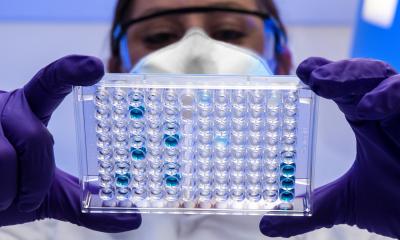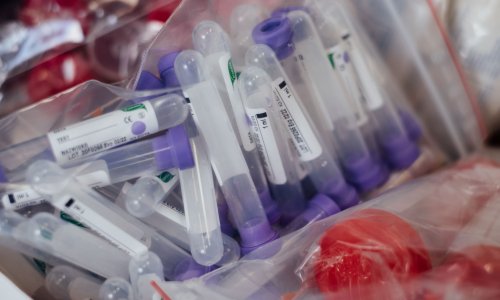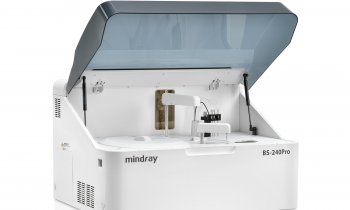Simpler risk scoring
Bioelectrical impedance analysis (BIA) supports physicians in vital treatment decisions.


Over the last ten years, bioelectrical impedance analysis (BIA), a procedure that originated in the USA, has also become established in Europe as an evidence-based method to assess body composition and a patient’s respective state of health. ‘New technological developments make it possible to precisely and simply determine clinical parameters, and networking with different databases facilitates accurate risk prognoses for diseases,’ explains Professor Manfred J Müller, who heads the Department of Human Nutrition at the Institute of Human Nutrition and Food Science as well as the German Federal Ministry of Education and Research Reference Centre for Body Composition at the Christian-Albrechts University in Kiel.
‘BMI is out, BIA is the procedure of the future’ would be an apt description of the current trend in procedures to determine nutritional status. BIA can deliver much more than just the determination of body weight and height. It provides very precise information on fluids, functionality and energy balance of the human body. ‘BIA measures body fluids and can, if run in several frequencies, even differentiate between water that is still in the cells and water outside the cells,’ Prof. Müller explains. Assuming that fat-free mass (= FFM, which includes muscles and internal organs) has a water content of around 73%, this mass can be calculated with the help of BIA. The fat mass is then calculated from the difference between body weight and FFM. ‘BIA therefore does not actually measure fat mass, as frequently and erroneously described, but is primarily a measuring procedure to determine body resistances which, depending on the water and electrolyte content of the body, allows us to draw conclusions as to the fat mass.’
Fat mass is the largest energy storage of the body; it provides good information about the body’s energy balance. This is a particularly important parameter for obese as well as underweight patients. The objective of the treatment of obese patients is the mobilisation of surplus energy storage: ‘With the help of BIA, a doctor can calculate precisely how many calories a patient has to mobilise of the surplus fat mass in the context of a diet. The follow-up then shows clearly whether or not a patient has consistently stuck to the diet,’ he explains. Deviations compared to gold standard procedures can amount to around one to one and a half kilos, which, in his view, is insignificant because it is more important to reconstruct the change of a parameter over a certain period of time. The same applies to the observation of fluid increase and decrease in dialysis patients, for instance. ‘The actual important question, which can be answered with the help of BIA, is how much water the patient stores between dialysis appointments and how much is removed through dialysis. This is also important for patients with heart failure and vice versa, for patients suffering dehydration (such as geriatric patients).’
BIA can precisely capture a number of raw data including, for example, the phase angle and BIA vector graph; these are values that cannot be determined by any other method. The phase angle depends on the quality of the cell membranes, which indirectly in turn allows conclusions as to the quality of the fat-free body cell mass. The phase angle is a prognostic parameter, which, in the severely ill, prognostically discriminates between shorter and longer life expectancy. ‘In patients with wasting diseases, such as tuberculosis or cirrhosis of the liver, the phase angle helps to determine the extent or respectively the stage of the disease in addition to other values.’ This parameter is very helpful and supportive for the doctor’s approach regarding a patient’s further treatment. The big advantages of this method are the high precision and low impact on the patient, because it can basically be repeated every day.
For functionality, BIA also delivers very helpful information for patient rehabilitation. Through determination of the FFM and functional body mass (which corresponds with the sum of the oxygen-consuming cells) respectively, the doctor for instance can recognise whether muscle regeneration after a fracture is sufficient or whether the patient needs further physiotherapy. However, BIA not only measures but, through linking to other risk parameters and networking with various databases, can also provide comparisons.
The software supplied with the Body Composition Analyser (mBCA) by seca calculates the risk of developing certain diseases. ‘For obese patients it is also possible to enter data on inactivity and blood levels and the doctor will then receive information as to the extent of the patient’s cardiovascular risk. The physician can even choose between different, validated scores, such as the Framingham and the WHO Score,’ he explains, adding that it is fascinating how a patient’s risk can be calculated at the touch of a button – and with outstanding precision, as the variance of measurements for repeated measurements is less than one percent. ‘Bio-monitoring with BIA does not need to shun comparison with other medical procedures, and not with regards to the validity of its results either,’ Prof. Müller concludes.
Profile:
After studying medicine and psychology Professor Manfred J Mülller MD began his academic career at the Institute of Biochemistry at Hamburg University. Once qualified as a specialist for Internal Medicine, Gastroenterology and Hepatology he became a consultant in the Endocrinology and Gastroenterology Department at Hannover Medical School, as guest lecturer at the University of Geneva and head of the Department of ‘Dietetic Foods’ at the German Federal Health Office in Berlin. Prof. Müller habilitated in Internal Medicine and Food Sciences. He currently heads the Institute of Human Nutrition and Food Science at the Christian-Albrechts University, in Kiel, and is spokesperson of the BMBF (Federal Ministry of Education and Research) Competency Network on Obesity.
01.02.2013











